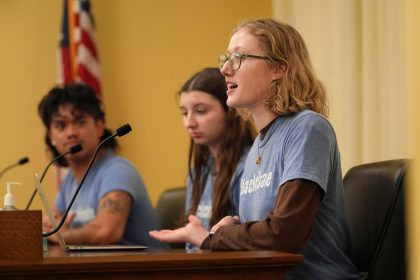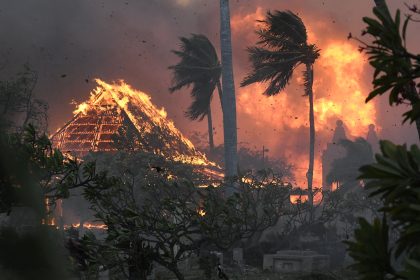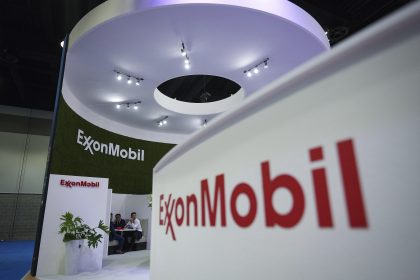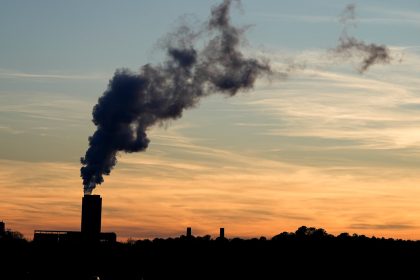Some Houses Being Built to Withstand Hurricanes and Cut Emissions
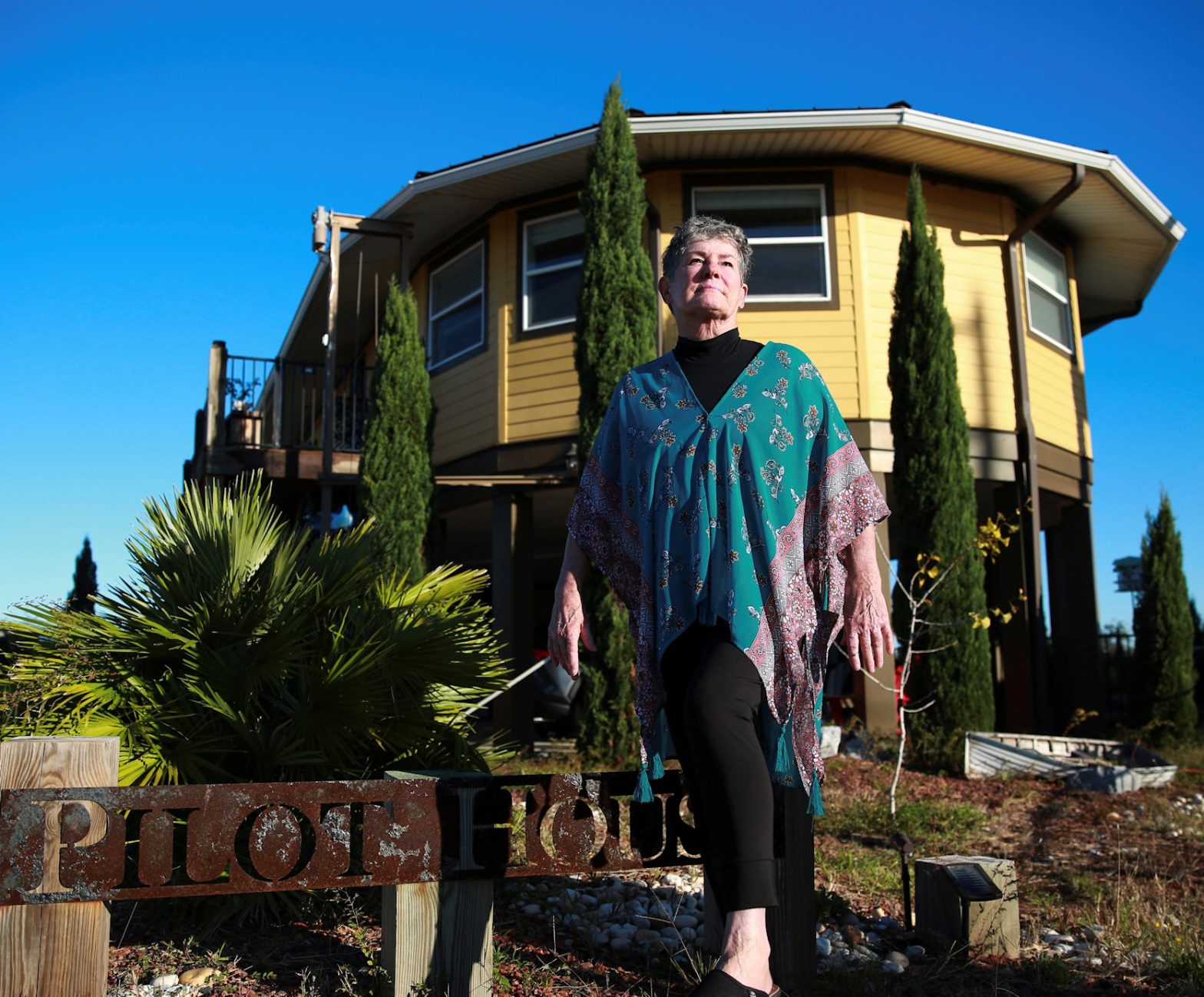
When Hurricane Michael hit the Florida Panhandle five years ago, it left boats, cars and trucks piled up to the windows of Bonny Paulson’s home in the tiny coastal community of Mexico Beach, Florida, even though the house rests on pillars 14 feet above the ground. But Paulson’s home, with a rounded shape that looks something like a ship, shrugged off Category 5 winds that might otherwise have collapsed it.
“I wasn’t nervous at all,” Paulson said, recalling the warning to evacuate. Her house lost only a few shingles, with photos taken after the storm showing it standing whole amid the wreckage of almost all the surrounding homes.
Some developers are building homes like Paulson’s with an eye toward making them more resilient to the extreme weather that’s increasing with climate change, and friendlier to the environment at the same time. Solar panels, for example, installed so snugly that high winds can’t get underneath them, mean clean power that can survive a storm. Preserved wetlands and native vegetation that trap carbon in the ground and reduce flooding vulnerability, too. Recycled or advanced construction materials that reduce energy use as well as the need to make new material.
A person’s home is one of the biggest ways they can reduce their individual carbon footprint. Buildings release about 38% of all energy-related greenhouse gas emissions each year. Some of the carbon pollution comes from powering things like lights and air conditioners and some of it from making the construction materials, like concrete and steel.
Deltec, the company that built Paulson’s home, says that only one of the nearly 1,400 homes it’s built over the last three decades has suffered structural damage from hurricane-force winds. But the company puts as much emphasis on building green, with higher-quality insulation that reduces the need for air conditioning, heat pumps for more efficient heating and cooling, energy-efficient appliances, and of course solar.
“The real magic here is that we’re doing both,” chief executive Steve Linton. “I think a lot of times resilience is sort of the afterthought when you talk about sustainable construction, where it’s just kind of this is a feature on a list … we believe that resilience is really a fundamental part of sustainability.”
Other companies are developing entire neighborhoods that are both resistant to hurricanes and contribute less than average to climate change.
Pearl Homes’ Hunters Point community in Cortez, Florida, consists of 26 completed houses and 30 to be built by the end of 2024 that are all LEED-certified platinum, the highest level of one of the most-used green building rating systems.
To reduce vulnerability to flooding, home sites are raised 16 feet (4.8 meters) above code. Roads are raised, too, and designed to direct accumulating rainfall away and onto ground where it may be absorbed. Steel roofs with seams allow solar panels to be attached so closely it’s difficult for high winds to get under them, and the homes have batteries that kick in when power is knocked out.
Pearl Homes CEO Marshall Gobuty said his team approached the University of Central Florida with a plan to build a community that doesn’t contribute to climate change. “I wanted them to be not just sustainable, but resilient, I wanted them to be so unlike everything else that goes on in Florida,” Gobuty said. “I see homes that are newly built, half a mile away, that are underwater … we are in a crisis with how the weather is changing.”
That resonates with Paulson, in Mexico Beach, who said she didn’t want to “live day to day worried about tracking something in the Atlantic.” Besides greater peace of mind, she says, she’s now enjoying energy costs of about $32 per month, far below the roughly $250 she said she paid in a previous home.
“I don’t really feel that the population is taking into effect the environmental catastrophes, and adjusting for it,” she said. “We’re building the same old stuff that got blown away.”
Babcock Ranch is another sustainable, hurricane-resilient community in South Florida. It calls itself the first solar-powered town in the U.S., generating 150 megawatts of electricity with 680,000 panels on 870 acres (350 hectares). The community was also one of the first in the country to have large batteries on site to store extra solar power to use at night or when the power is out.
Syd Kitson founded Babcock Ranch in 2006. The homes are better able to withstand hurricane winds because the roofs are strapped to a system that connects down to the foundation. Power lines are buried underground so they can’t blow over. The doors swing outward in some homes so when pressure builds up from the wind, they don’t blast open, and vents help balance the pressure in garages.
In 2022, Hurricane Ian churned over Babcock Ranch as a Category 4 storm. It left little to no damage, Kitson said.
“We set out to prove that a new town and the environment can work hand-in-hand, and I think we’ve proven that,” said Kitson. “Unless you build in a very resilient way, you’re just going to constantly be repairing or demolishing the home.”
The development sold some 73,000 acres (29,500 hectares) of its site to the state for wetland preservation, and on the land where it built, a team studied how water naturally flows through the local environment and incorporated it into its water management system.
“That water is going to go where it wants to go, if you’re going to try and challenge Mother Nature, you’re going to lose every single time,” Kitson said. The wetlands, retention ponds, and native vegetation are better able to manage water during extreme rainfall, reducing the risk of flooded homes.
In the Florida Keys, Natalia Padalino and her husband, Alan Klingler, plan to finish building a Deltec home by December. The couple was concerned about the future impacts global warming and hurricanes would have on the Florida Keys and researched homes that were both sustainable and designed to withstand these storms.
“We believe we’re building something that’s going to be a phenomenal investment and reduce our risk of any major catastrophic situation,” Klingler said.
“People have been really open and receptive. They tell us if a hurricane comes, they’re going to be staying in our place,” Padalino said.



















